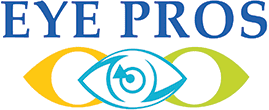Seasonal Eye Health: How to Care for Your Eyes Through Changing Weather

Our eyes are exposed to a variety of environmental changes throughout the year, from dry, cold winds in winter to bright, sunny days in summer. Each season brings its own set of challenges for maintaining healthy vision. The good news is that with a few adjustments to your routine, you can protect your eyes no matter the weather. Whether you’re dealing with dry eyes in winter or battling allergies in spring, taking proper care of your eyes is crucial. This guide will show you how to keep your vision sharp and your eyes comfortable year-round with expert-backed tips for every season. And remember, regular visits to your eye doctor are just as important as these seasonal habits. By staying proactive, you can prevent common eye issues before they become a problem. Winter Eye Care Winter can be tough on your eyes. The combination of cold, dry air outdoors and heated indoor environments can quickly lead to dry eyes, irritation, and discomfort. Not to mention, the harsh glare from snow can make it difficult to see clearly, especially without proper protection. Here are some quick tips to keep your eyes healthy during the winter months: Use Humidifier Indoors Heating systems dry out the air, which can lead to dry eyes. A humidifier helps maintain moisture levels in your home, keeping your eyes more comfortable. Stay Hydrated Cold weather often makes us forget to drink water, but staying hydrated is crucial for your overall health and for keeping your eyes from drying out. Wear Sunglasses Snow reflects sunlight, increasing your exposure to UV rays. Wearing sunglasses with UV protection shields your eyes from harmful rays and reduces glare. Apply Eye Drops If you feel your eyes becoming dry or irritated, lubricating eye drops can provide relief. Look for preservative-free options for long-term use. Winter is a season when many people experience discomfort due to eye dryness. If you notice persistent symptoms, it might be time to consult your eye doctor. A professional can recommend the right treatments to keep your eyes comfortable all season long. Spring Eye Care Springtime brings blooming flowers, fresh air… and a whole lot of pollen! While it’s a beautiful season, it’s also prime time for allergy-related eye issues like redness, itching, and watery eyes. If you’re someone who suffers from seasonal allergies, protecting your eyes from allergens is essential to staying comfortable. Here are some easy ways to care for your eyes during the spring: Wear Sunglasses Outdoors Not only do sunglasses protect against UV rays, but they also shield your eyes from wind and pollen, reducing the chances of allergens getting into your eyes. Use Allergy Eye Drops Over-the-counter allergy eye drops can help reduce redness and itching. For severe symptoms, your eye doctor might recommend prescription options. Keep Windows Closed While it’s tempting to let in the fresh spring air, doing so can bring in pollen and allergens. Use air conditioning to filter the air instead. Wash Your Hands and Face Frequently Pollen can easily stick to your skin and hands, so washing frequently will reduce the risk of transferring allergens to your eyes. Allergy season doesn’t have to mean suffering from constant eye irritation. If your symptoms persist, consult an eye doctor for tailored advice and treatments. Summer Eye Care Summer is the season for sunshine, beach trips, and outdoor fun, but it also comes with its own set of challenges for your eyes. Between the harsh sun, chlorine from pools, and dry, hot air, your eyes need extra care to stay healthy and comfortable. Here’s how to protect your eyes during the summer: Wear UV-Blocking Sunglasses Sunglasses aren’t just a fashion statement—they’re essential for protecting your eyes from harmful UV rays. Choose sunglasses that block 100% of both UVA and UVB rays to prevent damage from prolonged sun exposure. Use Protective Eyewear in Pools Chlorine can be extremely irritating to your eyes. Wearing swim goggles helps protect your eyes from the harsh chemicals in pools and reduces the risk of eye infections. Stay Hydrated Just like in winter, dehydration in summer can lead to dry eyes. Drinking plenty of water helps keep your body hydrated and your eyes properly lubricated. Limit Sun Exposure If possible, avoid being in direct sunlight during peak hours (10 AM to 4 PM), or wear a wide-brimmed hat to provide additional shade for your eyes. During the summer, your eyes can be more vulnerable to UV damage, so it’s essential to take extra precautions. If you experience eye discomfort, dryness, or vision changes, it’s best to consult an eye doctor for a check-up. Fall Eye Care As the temperatures drop and the winds pick up, fall introduces new environmental factors that can impact your eye health. Windy days can blow debris and dust into your eyes, causing irritation, and the shift to cooler weather can lead to dryness similar to what you experience in winter. Here are some essential eye care tips for the fall season: Use Artificial Tears Windy, dry conditions can make your eyes feel gritty and irritated. Keep artificial tears on hand to keep your eyes moist and comfortable. Wear Protective Eyewear Whether you’re raking leaves or taking a walk on a blustery day, wearing protective eyewear can help shield your eyes from debris and allergens carried by the wind. Clean Your Home Regularly Fall allergens like mold and dust can accumulate indoors, leading to irritation and eye allergies. Regular cleaning can help minimize indoor allergens and keep your eyes feeling fresh. Moisturize Your Eyes As fall transitions into winter, the air becomes drier, both outside and indoors. Using a humidifier at home can help maintain moisture in the air and prevent dry eyes. Fall can be particularly harsh on those who are prone to allergies or dryness, so taking proactive steps can go a long way in keeping your eyes comfortable. If fall brings more eye issues than usual, consulting an eye doctor is a good idea. FAQs How does winter affect your
Are Sore Eyes Contagious? What You Need to Know

If you’ve ever experienced sore, red, or irritated eyes, you’re not alone. Sore eyes can be caused by a variety of factors, ranging from infections to allergies. One of the most common questions people ask when dealing with this condition is, “Are sore eyes contagious?” The answer depends on the cause. In this article, we’ll break down what causes sore eyes, the symptoms to watch for, and whether or not sore eyes are contagious. With the help of your eye doctor, understanding and treating sore eyes can be simple and effective. Whether it’s a minor irritation or a contagious infection, early treatment can prevent complications and help you get back to seeing clearly. What Causes Sore Eyes? Sore eyes can result from a variety of causes, ranging from mild irritants to serious infections. Understanding the root cause is crucial in determining whether the condition is contagious and how to treat it effectively. Here are some of the most common causes of sore eyes: Viral Infections One of the most frequent causes of contagious sore eyes is viral conjunctivitis, often referred to as pink eye. This type of infection spreads easily through direct contact or contaminated surfaces, making it highly contagious. Bacterial Infections Bacterial conjunctivitis is another contagious form of sore eyes. This infection is typically caused by bacteria entering the eye, often through contact with unclean hands or objects. It’s common in children, and sore eyes treatment for kids often involves antibiotic eye drops. Allergies Non-contagious sore eyes are often caused by allergies. Pollen, dust, pet dander, and other allergens can irritate the eyes, leading to redness, itching, and discomfort. Allergic sore eyes are not contagious, but they can be uncomfortable. Irritants Smoke, pollution, and chemicals can also cause non-contagious sore eyes. Exposure to these irritants can result in redness, dryness, and irritation, but they do not pose a risk of spreading to others. Identifying the cause of sore eyes is the first step in determining whether they’re contagious and finding the right treatment. Your eye doctor can help diagnose the condition and recommend the appropriate treatment for sore eyes. Are Sore Eyes Contagious? The question on everyone’s mind: “Are sore eyes contagious?” The answer depends on the underlying cause. Some forms of sore eyes are highly contagious, while others are not. Contagious Sore Eyes Viral and bacterial conjunctivitis are the most common types of contagious sore eyes. These infections spread easily through direct contact, such as touching your eyes and then touching surfaces or shaking hands. Viral infections like pink eye can be especially contagious, making it important to practice good hygiene and avoid sharing personal items like towels or makeup. Non-Contagious Sore Eyes If your sore eyes are caused by allergies or irritants (such as smoke or dust), they are not contagious. While these forms of sore eyes can cause redness and discomfort, they do not spread to others. Knowing whether your sore eyes are contagious can help you prevent the spread of infection. If you suspect that you have a viral or bacterial infection, it’s important to seek treatment from an eye doctor as soon as possible. Early diagnosis and treatment for sore eyes can prevent the condition from worsening or spreading to others. Symptoms of Contagious vs. Non-Contagious Sore Eyes Understanding the difference in symptoms can help you identify whether your sore eyes are contagious or not. While many symptoms overlap, certain signs can point to a viral or bacterial infection, which could spread to others. Contagious Sore Eyes Symptoms Redness and swelling in the white part of the eye Watery or thick discharge (often yellow or green) Crusting around the eyelids, especially after sleep Itching or burning sensation Increased sensitivity to light Symptoms often begin in one eye and can spread to the other if not treated. Non-Contagious Sore Eyes Symptoms Redness and irritation primarily from allergens or irritants Itchy eyes, often due to allergies Dryness or gritty feeling in the eyes Watery eyes, usually caused by environmental irritants like smoke or dust Symptoms are often present in both eyes simultaneously If you’re experiencing symptoms of contagious sore eyes, it’s important to see an eye doctor for a proper diagnosis and treatment for sore eyes. Early intervention can help prevent the condition from spreading and ease discomfort. How to Prevent the Spread of Sore Eyes If your sore eyes are caused by a contagious infection, such as viral or bacterial conjunctivitis, it’s important to take steps to prevent spreading it to others. Here are some key preventive measures: Wash Your Hands Frequently Wash your hands with soap and water, especially after touching your eyes. This reduces the chances of spreading the infection to surfaces or other people. Avoid Touching Your Eyes Try not to touch or rub your eyes, as this can spread the infection from one eye to the other or to others around you. Don’t Share Personal Items Avoid sharing towels, pillowcases, makeup, or any personal items that come into contact with your face or eyes. This is a common way viral or bacterial infections can spread. Disinfect Surfaces Regularly disinfect commonly touched surfaces such as doorknobs, countertops, and bathroom items to prevent the spread of germs. Stay Home If your sore eyes are contagious, it’s best to avoid going to work, school, or public places until your eye doctor confirms it’s safe to return. Taking these steps can help stop the spread of contagious sore eyes and protect those around you. If you’re unsure whether your sore eyes are contagious, it’s best to consult an eye doctor for proper diagnosis and advice. Treating Sore Eyes: Contagious vs. Non-Contagious The treatment for sore eyes depends on the underlying cause and whether it’s contagious. Here’s how you can manage both types of sore eyes: Treatment for Contagious Sore Eyes Viral Conjunctivitis There’s usually no specific treatment for viral infections like pink eye, as they often clear up on their own within a week or two. However, your eye doctor may recommend lubricating eye
The Eye Pros on Relieving Itchy Eyes at Night

If you find yourself struggling with itchy eyes at night, you’re not alone. Many people experience this uncomfortable issue, often worsened by factors like allergies, dry eyes, or prolonged screen use before bed. Itchy eyes can disrupt your sleep, leave you feeling irritated, and lead to other symptoms such as redness, tearing, and swelling. While rubbing itchy eyes might provide temporary relief, it often makes the problem worse by introducing more irritants and further aggravating the eyes. At The Eye Pros, we understand how frustrating nighttime eye irritation can be. Whether it’s due to dry air, allergens, or even poor eye hygiene, it’s essential to address the underlying cause of the itching. In this article, we’ll explore common itchy eyes causes, effective itchy eyes treatments, and when you should consult an eye doctor for more serious concerns. Whether you’re dealing with itchy eyes at night in kids or adults, understanding the triggers and remedies will help you achieve relief and better eye health. Causes of Itchy Eyes at Night Understanding the underlying itchy eyes is key to finding the right solution. While itchy eyes can happen at any time, many people experience the problem more severely at night due to various factors. Allergies Allergies are one of the most common causes of itchy eyes at night. When you’re exposed to allergens such as dust mites, pet dander, or mold while you sleep, it triggers an allergic response that leads to itchy, red, and swollen eyes. Seasonal allergies, especially during spring and fall, can also cause itchy eyes at night due to increased pollen exposure. If you’re experiencing these symptoms, it’s essential to identify and minimize exposure to allergens in your home. Dry Eyes Dry eyes are another frequent culprit of nighttime itching. The lack of adequate tear production or poor tear quality can result in dryness and irritation, especially when exposed to dry air from fans or air conditioning. This condition, known as nocturnal lagophthalmos, occurs when your eyes don’t fully close while sleeping, leading to dryness and discomfort. Applying itchy eye drops before bed can help alleviate some of the symptoms of dryness. Eye Strains from Screens Prolonged exposure to screens before bed can also lead to itchy eyes at night. Excessive screen time reduces blink rate, which dries out the eyes and causes discomfort. This can worsen when compounded by low light environments, which strain the eyes even more. Contact Lens Use Wearing contact lenses for too long or improper lens hygiene can lead to rubbing itchy eyes at night. Contact lenses trap allergens and irritants, and when worn for extended periods, they can cause inflammation and dryness. Switching to glasses before bed can help your eyes “breathe” and reduce nighttime irritation. Irritants in the Environment Environmental factors such as smoke, pollution, or even strong cleaning products can irritate your eyes, especially at night when you’re exposed to these irritants for long periods in an enclosed space. Ensuring your bedroom is free from irritants can go a long way toward reducing itchy eyes at night. By identifying the cause of your itchy eyes, you can take steps to prevent them from worsening. If you continue to experience discomfort despite making changes, it may be time to consult an eye doctor for a proper diagnosis and targeted itchy eyes treatment. Home Remedies and Treatment Options Addressing itchy eyes at night often requires a combination of home remedies and professional treatments. By identifying the root cause and applying the right remedies, you can find relief from the discomfort and get back to restful sleep. Below are some effective ways to manage itchy eyes: Use Artificial Tears One of the simplest and most effective remedies is using itchy eyes drops, specifically artificial tears. These eye drops help lubricate the eyes, reducing dryness and irritation, especially if dry eyes are causing the itching. Opt for preservative-free versions, as they are gentler on the eyes and can be used more frequently without irritation. Warm and Cool Compress For those suffering from conditions like blepharitis (inflammation of the eyelids) or dry eyes, alternating between warm and cool compress can provide immediate relief. A warm compress helps to loosen debris and oil buildup in the eyelids, while a cool compress can reduce inflammation and soothe itchy eyes. Humidifiers If dry air is a contributing factor, especially during the colder months or in air-conditioned rooms, using a humidifier in your bedroom can prevent your eyes from drying out overnight. Moist air can help keep your eyes hydrated, minimizing discomfort. Allergen Management Allergies are a leading cause of itchy eyes at night, and managing allergens in your sleeping environment is crucial. Consider the following tips: Use allergen-proof pillows and bedding. Keep pets out of the bedroom, especially if you’re allergic to pet dander. Vacuum and dust regularly to reduce dust mites and other irritants. Proper Contact Lens Care For contact lens wearers, practicing good hygiene is essential to avoid irritation. Ensure that you’re cleaning your lenses as directed and switching to glasses in the evening to give your eyes a break. Poor contact lens hygiene can lead to eye infections or exacerbate itchy eyes. Avoid Rubbing Your Eyes While rubbing itchy eyes might seem like a quick fix, it often worsens the problem by introducing more irritants and potentially causing damage to the eye’s delicate tissues. Instead, blink more frequently to naturally lubricate your eyes or apply lubricating eye drops to relieve the itch. If these remedies don’t offer enough relief, it’s best to seek professional help from an eye doctor. They can provide more tailored itchy eyes treatment options based on your specific symptoms and the underlying cause. When to See an Eye Doctor While home remedies and self-care can offer relief for many cases of itchy eyes at night, there are times when professional care from an eye doctor is essential. If your symptoms persist or worsen, it may indicate a more serious underlying issue that requires medical attention. Here are some signs that
How to Prevent Eye Infections: Tips for Healthy Eyes

Your eyes are one of the most sensitive parts of your body, and keeping them healthy should be a priority. One of the most common threats to eye health is infections, which can cause discomfort, irritation, and, in severe cases, vision loss. The good news is that many eye infections are preventable with the right habits and care. From practicing proper hygiene to using contact lenses correctly, there are several ways to protect your eyes from harmful bacteria and viruses. Regular check-ups with an eye doctor are also essential in catching infections early and ensuring your eyes remain healthy. In this guide, we’ll explore the key causes of eye infections and provide practical tips to prevent them, so you can enjoy clear, healthy vision for the long term. Common Causes of Eye Infection Eye infections can develop from various sources, including bacteria, viruses, and fungi. Understanding these causes can help you take the necessary precautions to prevent infections and maintain healthy eyes. Here are some of the most common causes of eye infections: Bacteria Bacterial infections, such as those caused by Staphylococcus, are a frequent source of eye infections. These bacteria can enter the eyes through dirty hands, contaminated contact lenses, or shared eye makeup. Viruses Viral infections, like conjunctivitis (pink eye), are highly contagious and often spread through direct contact with infected individuals or surfaces. Viral eye infections can cause redness, swelling, and watery discharge. Fungi Fungal infections, although rare, can occur through exposure to contaminated water or eye products. These infections can lead to serious complications if left untreated. Allergies and Irritants While not infectious, exposure to allergens and irritants can weaken your eyes’ defenses, making them more susceptible to infections. By being aware of these potential causes, you can take proactive steps to protect your eyes from harmful substances. If you notice any symptoms of infection, it’s important to consult an eye doctor for a thorough evaluation. Essential Tips to Prevent Eye Infections Preventing eye infections begins with good hygiene and proper care for your eyes and any products that come in contact with them. By incorporating these habits into your daily routine, you can significantly reduce the risk of infections and ensure your eyes remain healthy. Here are some essential tips for preventing eye infections: Wash Your Hands Regularly One of the simplest and most effective ways to prevent eye infections is to always wash your hands before touching your eyes or handling contact lenses. This helps to remove harmful bacteria and viruses that can cause infections. Practice Proper Contact Lens Care If you wear contact lenses, it’s crucial to clean and store them correctly. Use the recommended solution, never reuse old solution, and avoid sleeping or swimming with lenses in, as this can introduce bacteria into your eyes. Use Clean Towels and Bedding Towels and pillowcases can harbor bacteria that may come in contact with your eyes. Make sure to wash these items regularly to reduce contamination and protect your eye health. Avoid Touching Your Eyes Touching or rubbing your eyes can transfer germs from your hands to your eyes, increasing the risk of infection. If you must touch your eyes, ensure your hands are clean, or use a tissue. Don’t Share Eye Makeup or Eye Products Sharing eye products like mascara, eyeliner, or even eye drops can easily spread bacteria and viruses. Keep your products personal and replace them regularly to avoid infections. Wear Protective Eyewear When working in dusty or hazardous environments, or even during sports activities, wearing protective eyewear can help prevent debris and harmful particles from entering your eyes and causing irritation or infection. By following these simple steps, you can prevent most common eye infections and keep your eyes healthy. Remember, if you experience any persistent symptoms such as redness, swelling, or discharge, visiting an eye doctor for professional care is essential. When to See an Eye Doctor Even with the best prevention habits, eye infections can still occur. It’s essential to recognize the symptoms and know when to consult an eye doctor for professional care. Early intervention can prevent infections from worsening and help you recover quickly. Here are common signs that it’s time to see an eye doctor: Persistent Redness If your eyes remain red and irritated for more than a couple of days, it could be a sign of a bacterial or viral infection that requires medical attention. Swelling or Discharge Swelling around the eyes or unusual discharge (such as thick, yellow or green fluid) is a clear indication of infection. This may require prescription eye drops or antibiotics from your eye doctor. Pain or Sensitivity to Light If you experience sharp pain in the eyes, coupled with sensitivity to light, this could be a more serious infection that needs immediate medical care. Blurred Vision Any changes in vision, such as blurred vision, could indicate that the infection is affecting your ability to see clearly. Don’t delay in scheduling an appointment with an eye doctor to address the issue. Eyes Doesn’t Improve with Basic Care If your symptoms aren’t improving with over-the-counter treatments like eye drops or warm compresses, it’s important to seek professional help. Your eye doctor can diagnose the type of infection you’re dealing with and prescribe the right course of treatment, whether it’s antibiotic eye drops or other medication. Regular eye exams are also key in preventing infections, as your eye doctor can catch any early signs of irritation or bacteria buildup before they become more serious. FAQs How do you treat an eye infection? Treating an eye infection depends on the type of infection. Bacterial infections are typically treated with prescription antibiotic eye drops or ointments, while viral infections, like conjunctivitis, may resolve on their own but can be managed with lubricating eye drops. It’s important to visit an eye doctor for the right diagnosis and treatment. How do you tell if an eye is infected? Common signs of an eye infection include persistent redness, swelling, discharge, itchiness, and blurred vision. If
5 Eye Conditions to Watch Out for After 40
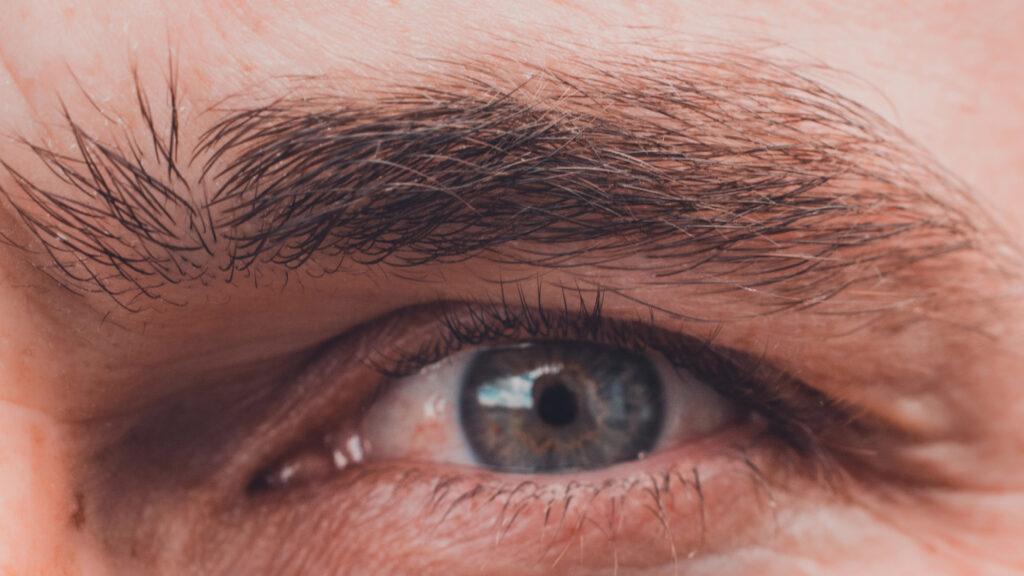
Turning 40 is a milestone, and along with it come some natural changes in our vision. While most people may only notice small shifts at first, certain eye conditions become more common after 40, potentially impacting everyday activities and overall quality of life. Keeping up with regular eye exams and knowing what to watch for can make a big difference in catching these issues early and managing them effectively. An eye doctor can provide tailored advice to help protect your vision as you age. Early detection and proper care are essential to maintaining healthy vision and independence. In this article, we’ll explore five common eye conditions to look out for after 40, from presbyopia to dry eye syndrome, along with tips on how to manage them and keep your eyes in top shape. Presbyopia: The Need for Reading Glasses One of the first signs of aging eyes is presbyopia, a condition where the eye gradually loses the ability to focus on close objects. This happens as the lens inside the eye becomes less flexible, making it harder to switch focus between near and distant objects. Typically starting in the early 40s, presbyopia often results in the need for reading glasses or multifocal lenses. Signs of presbyopia include: Holding Reading Material at Arm’s Length: A common habit people develop to see text more clearly. Difficulty Reading Small Prints: Small text on phones, menus, or books may become challenging to read. Eye Strain and Headaches: Frequent squinting or struggling to focus can lead to discomfort. While presbyopia is a natural part of aging, an eye doctor can recommend the best solution, such as reading glasses, contact lenses, or multifocals, tailored to your lifestyle. Regular eye exams can also help ensure your prescription is up-to-date and assess any changes in your vision. Cataracts: Clouding of the Lens Cataracts are another common age-related eye condition that typically appears after 40, though they become more prevalent in later years. A cataract occurs when the lens of the eye becomes cloudy, resulting in blurred or dim vision. This clouding happens gradually and can eventually interfere with daily activities like reading, driving, and recognizing faces. Signs of cataracts include: Blurry or Cloudy Vision: Objects may appear hazy or out of focus, even with glasses. Sensitivity to Light and Glare: Bright lights or sunlight may cause discomfort or halos around objects. Difficulty Seeing at Night: Low-light conditions, such as driving at night, may become more challenging. Fortunately, cataract surgery is a safe and effective solution for restoring clear vision, and it’s one of the most common procedures performed worldwide. If you notice any symptoms of cataracts, an eye doctor can assess your vision and discuss options for managing or removing cataracts when needed. Regular eye exams are key to monitoring cataract development and ensuring they don’t interfere with your quality of life. Glaucoma: The Silent Threat to Vision Known as the “silent thief of sight,” glaucoma is a group of eye diseases that damage the optic nerve, often due to increased pressure in the eye. Since glaucoma usually progresses without noticeable symptoms in its early stages, many people may not realize they have it until vision loss occurs. This makes regular eye exams crucial, especially for those over 40, as early detection can help slow or prevent vision loss. Signs of glaucoma include: Gradual Loss of Peripheral Vision: Often, side vision is affected first, making it harder to notice. Halos Around Lights: Bright lights may appear to have rings or halos, especially at night. Eye Pain or Redness: In some cases, particularly with angle-closure glaucoma, pain or eye redness may be present. An eye doctor can measure eye pressure and examine the optic nerve to detect early signs of glaucoma. If glaucoma is detected, there are various treatment options available, including medications, laser therapy, and surgery. Early diagnosis and treatment are essential, as vision lost to glaucoma cannot be restored, making prevention and regular monitoring vital. Age-Related Macular Degeneration (AMD): Central Vision Loss Age-related macular degeneration (AMD) is a common eye condition that affects the macula, the central part of the retina responsible for sharp, detailed vision. AMD is one of the leading causes of vision loss in people over 40, particularly impacting activities that rely on central vision, such as reading, driving, and recognizing faces. There are two types of AMD: dry (more common) and wet (less common but more severe). Signs of AMD include: Blurred or Distorted Central Vision: Straight lines may appear wavy, and objects may look blurry. Difficulty Recognizing Faces: The center of your field of vision may be affected, making it challenging to see faces clearly. Dark or Empty Spots: A dark or blank area may appear in the center of your vision. While there is no cure for AMD, early detection through regular visits to an eye doctor can slow its progression, particularly in the case of wet AMD, which may be treated with injections, laser therapy, or lifestyle adjustments. For those with dry AMD, dietary changes and vision aids can help manage symptoms and maintain quality of life. Dry Eye Syndrome: Discomfort and Irritation Dry eye syndrome is a common condition that often becomes more prevalent after 40, especially as natural tear production decreases with age. Hormonal changes, certain medications, and prolonged screen time can contribute to dry eyes, leading to discomfort and irritation that can interfere with daily activities. Signs of dry eye syndrome include: Stinging or Burning Sensation: A frequent feeling of dryness or burning in the eyes. Redness and Irritation: The eyes may appear red, particularly after reading or using digital devices. Sensitivity to Light: Bright lights may feel harsh and uncomfortable. Blurred Vision: Vision may temporarily blur, especially after focusing for long periods. Managing dry eye syndrome often involves lifestyle adjustments, such as reducing screen time and using a humidifier, as well as treatments like artificial tears or prescription eye drops. An eye doctor can help identify the underlying cause and recommend the best treatment options
Cataracts: Signs, Symptoms, and Treatment at The Eye Pros
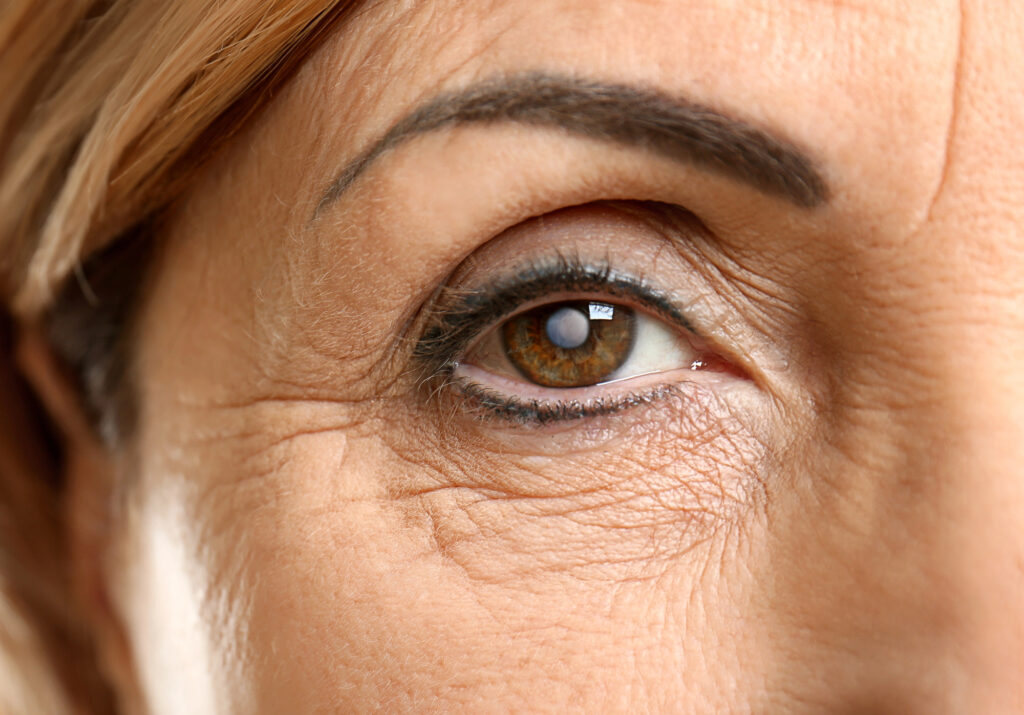
https://vimeo.com/989397662?share=copy Have you noticed your vision becoming cloudy or blurred lately? This could be a sign of cataracts, a common eye condition that Dr. Robison at The Eye Pros in Boise, Idaho sees frequently. In this video, Dr. Robison explains what cataracts are, the symptoms to watch for, and the treatment options available. Cataracts occur when the lens of the eye, which normally focuses light, becomes cloudy. This can make it difficult to see clearly, especially in low light or when looking at bright lights. Hi, I’m Dr. Robison with The Eye Pros in Boise, Idaho. I just wanted to talk to you guys a little bit about something we commonly see every day: cataracts. Cataracts are just a clouding of the lens. They get harder and more densely cloudy. It’s like looking through a foggy or dirty window, especially at night. Bright lights will be terrible. And so, if you’re seeing any of these kinds of symptoms, come in and see us at The Eye Pros. Dr. Chris Robison Tweet I have been using Eyemart Express for several years. I have eye appointments every 6 months and have also purchased glasses there as well. It is a one stop place to get everything done if you have any eye issues. I am very happy with Dr. Thompson as well as he stays on top of any issues I may have going on. Thanks everybody. Linda Briggs Several great doctors and amazing prices on exams and contact lenses. Having EyeMart next door makes it easy to get a prescription and get glasses the same day. Ethan Johnson I have been a patient here for many years and Dr. Bloom has always taken great care of me. He is thorough, professional, and kind! Emma Carter Previous Next If you’re experiencing any of the symptoms Dr. Robison mentioned, such as blurry vision, difficulty seeing at night, or sensitivity to bright lights, it’s important to schedule an appointment with an eye doctor. Early detection and treatment of cataracts can help you maintain good vision and avoid complications. At The Eye Pros, Dr. Robison can diagnose cataracts and recommend the best course of treatment, which may include monitoring your condition, using eyeglasses or contact lenses, or eventually, cataract surgery. Restore the comfort and clarity of your vision. Call Boise Eye Pros at (208) 378-7020 or schedule your appointment today. We look forward to helping you achieve optimal eye health! Book Now Call Us
Blurry Vision? Learn How Astigmatism Treatment Can Help You See Clearly

Are you experiencing blurry vision, both near and far? Do straight lines sometimes appear doubled? These could be signs of astigmatism. In this video, Dr. Eric Thompson, one of the co-owners and ophthalmologists at Eye Pros, will explain what astigmatism is and how it affects your vision. Dr. Thompson will also discuss how a simple eye exam can diagnose astigmatism and how corrective lenses, like glasses or contacts, can help you see clearly again. Hello everyone. I’m Dr. Thompson. Over at Eye Pros, one of our seven doctors and one of our co-owners, we explain astigmatism. Astigmatism is a fancy medical term for an irregularly shaped eye or an irregular curve of the eye. When a picture or a letter enters your eye, it often doubles into two different images. So, during your eye examination, we’re able to measure those two different images and correct it with a pair of glasses or a pair of contacts. People with astigmatism tend to have blurry vision, both far away and up close, on their computer or on their phone. It is something we can definitely take care of and help you see better through an eye examination. Dr. Eric Thompson Tweet I have been using Eyemart Express for several years. I have eye appointments every 6 months and have also purchased glasses there as well. It is a one stop place to get everything done if you have any eye issues. I am very happy with Dr. Thompson as well as he stays on top of any issues I may have going on. Thanks everybody. Linda Briggs Several great doctors and amazing prices on exams and contact lenses. Having EyeMart next door makes it easy to get a prescription and get glasses the same day. Ethan Johnson I have been a patient here for many years and Dr. Bloom has always taken great care of me. He is thorough, professional, and kind! Emma Carter Previous Next As Dr. Thompson explained, astigmatism is a common eye condition that can cause blurred vision at all distances. The good news is that astigmatism is easily treatable with eyeglasses or contact lenses fitted after a comprehensive eye exam. If you’re experiencing any vision problems, schedule an appointment with Dr. Thompson or one of the other qualified ophthalmologists at Eye Pros. They can help you achieve clear and comfortable vision. Restore the comfort and clarity of your vision. Call Boise Eye Pros at (208) 378-7020 or schedule your appointment today. We look forward to helping you achieve optimal eye health! Book Now Call Us
Dry Eye Relief: Effective Treatment for Meibomian Gland Dysfunction at Boise Eye Pros
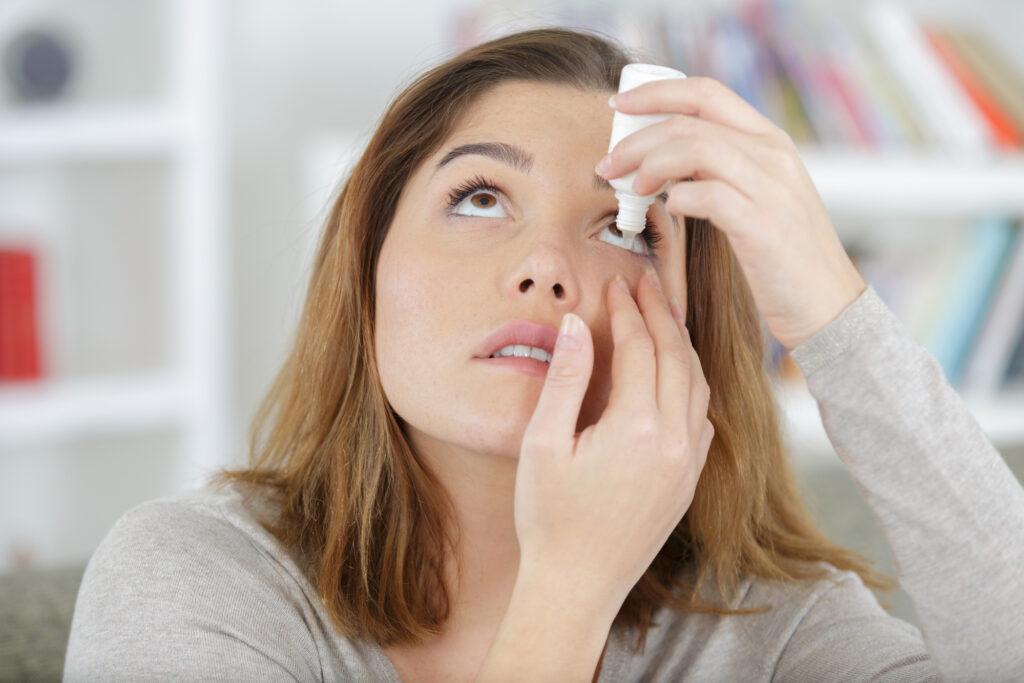
https://vimeo.com/988200040?share=copy This transcript is from an informational video by Dr. Robison of Boise Eye Pros about a condition called meibomian gland dysfunction (MGD). MGD occurs when the glands in your eyelids that produce oil for your tears become inflamed and clogged. This can lead to dry, gritty eyes because the oil layer of your tears evaporates too quickly. Dr. Robison discusses how Boise Eye Pros uses IPL technology to treat MGD by targeting inflammation and clearing blockages in the glands. Hi, I’m Dr. Robison with the Boise Eye Pros. Are you experiencing any dry or gritty eye symptoms? Chances are you might have meibomian gland dysfunction. Our tears are made up of three layers: there’s a sugar layer made by our eye, there’s a watery layer made by a gland in our sinuses, and there’s an oil layer made by glands in our eyelids called meibomian glands. If those meibomian glands get inflamed and clogged up, then we don’t spread oil over the tears, and our tears will evaporate quickly. At our Boise office, we have advanced technology to treat meibomian gland dysfunction. Our IPL device delivers intense pulses of light that target the blood vessels leading to eyelid inflammation, as well as melts down the oil that’s been hardened up in our eyelids, clearing a new path for our oil to spread over our tears, making it so our tears don’t evaporate so quickly. Here at the Eye Pros, our doctors work hard to find the root cause of your dry eyes, rather than throwing a bandaid over the symptoms such as with constant artificial tear use. So, if you or someone you know has been experiencing dry eye symptoms, our office has the most effective treatment options available. Dr. Chris Robison Tweet I have been using Eyemart Express for several years. I have eye appointments every 6 months and have also purchased glasses there as well. It is a one stop place to get everything done if you have any eye issues. I am very happy with Dr. Thompson as well as he stays on top of any issues I may have going on. Thanks everybody. Linda Briggs Several great doctors and amazing prices on exams and contact lenses. Having EyeMart next door makes it easy to get a prescription and get glasses the same day. Ethan Johnson I have been a patient here for many years and Dr. Bloom has always taken great care of me. He is thorough, professional, and kind! Emma Carter Previous Next Don’t let dry eyes disrupt your daily life! Schedule an appointment at Boise Eye Pros today. Our friendly staff will listen to your concerns and perform a comprehensive eye exam to diagnose the root cause of your dry eyes. We offer a variety of treatment options tailored to your specific needs, and our IPL technology provides a safe and effective solution for meibomian gland dysfunction. Restore the comfort and clarity of your vision. Call Boise Eye Pros at (208) 378-7020 or schedule your appointment today. We look forward to helping you achieve optimal eye health! Book Now Call Us
Utah’s Guide to Eye Health: Best Vitamins and Nutrients

Too many of us take our bodies and particularly our eyesight for granted, using them every day without much forethought. That’s until we are in a situation where we lose our health and vision for some reason. In some cases, vision loss or degradation is beyond our control. It could be genetic or due to a car accident. But in most cases, you can improve the quality of your vision and your eye health by eating a balanced diet and exercising regularly. You can take certain eye vitamins as supplements or eat foods that contain them. Consuming these regularly can prevent eye disease and allow you to live a quality life well into your 80s and 90s. Keep reading to find out more about what the best vitamin for the eyes is. Vitamin A: A Key Nutrient for Eye Health Vitamin A is essential for improving eyesight and overall eye health, making it one of the most important nutrients for maintaining vision. Known for its healing effects, Vitamin A can be easily added to your diet through a variety of foods. Fruits and Foods Rich in Vitamin A: Sweet potatoes Carrots Spinach, kale, and most leafy greens Dairy products like milk and cheese Broccoli Eggs Cantaloupes Mangoes Black-eyed peas Foods with an orange tinge, like carrots and sweet potatoes, contain carotenoids that are particularly effective in supporting eye health. This aligns with the concept of “we eat the rainbow”, which emphasizes the importance of consuming a variety of colorful fruits and vegetables to obtain a wide range of nutrients. Pro Tip: Carry baby carrots as a convenient snack to improve your eyesight on the go. Lutein and Zeaxanthin: Essential Carotenoids for Eye Health Lutein and Zeaxanthin are powerful carotenoids known for their numerous benefits to eye health. These nutrients are particularly effective in protecting the eyes from harmful blue light exposure, which is common when using digital devices like laptops, tablets, and smartphones. Lutein and Zeaxanthin Foods: Incorporating a variety of these foods into your diet can ensure you get enough Lutein and Zeaxanthin: Spinach – The best source of lutein Kale Turnip greens Collards Mustard greens Summer squash Peas Pumpkin Brussels sprouts Broccoli Sweet yellow corn Avocados Sweet red peppers These food are not only rich in Lutein and Zeaxanthin but also offer a range of other nutrients that contribute to overall eye health. Pro Tip: Cooking green leafy vegetables releases more Lutein, making it easier for your body to absorb this essential nutrient. Unfortunately, many Americans do not consume enough of these foods. For those who may not get sufficient Lutein and Zeaxanthin through their diet, supplements can be a valuable addition, especially for kids who may be picky eaters. Omega-3 Fatty Acids: Essential for Eye Health Omega-3 fatty acids are often regarded as the holy grail of nutrients due to their wide-ranging health benefits, including significant improvements in eye health. Whether you’re dealing with heart disease, cholesterol issues, or eye problems, adding Omega-3 fatty acids to your diet is crucial. How Omega-3 Improves Eyesight: Omega-3 fatty acids play a vital role in protecting your eyes from degradation and relieving inflammation, which can lead to conditions like cataracts, glaucoma, and dry eye syndrome. These fatty acids, specifically EPA and DHA, are critical for maintaining eye health and preventing long-term damage. Best Omega-3 for Eyes: EPA and DHA are the types of Omega-3 fatty acids that are particularly important for eye health. These are primarily found in fatty fish and fish oils. Does Omega-3 Improve Eyesight? Yes, Omega-3 fatty acids are known to improve eyesight by reducing inflammation and providing essential nutrients that support overall eye health. Sources of Omega-3 Fatty Acids: It’s easy to get your daily dosage of Omega-3 fatty acids by incorporating cold-water fish into your diet: Mackerel Salmon Sardines Anchovies Herrings If you’re not a fan of fish, there are other sources of Omega-3 fatty acids you can consider: Cod liver oil Oysters Caviar Alternatively, you can consider taking an Omega-3 fatty acid supplement. Pro Tip: Make sure your Omega-3 supplement contains both DHA and EPA at high concentrations for maximum eye health benefits. How Long Does It Take Omega-3 to Work for Eyes? The effects of Omega-3 on eyesight can vary depending on the individual, but many people start noticing improvements within a few weeks to a few months of consistent intake. Zinc: Essential for Retinal Health and Eye Protection Zinc is a vital mineral that plays a crucial role in maintaining the health of the retina, cell membranes, and protein structure of the eye. It also helps transport Vitamin A from the liver to the retina, where it produces melanin—a pigment that protects the eyes from harmful UV light. Ensuring adequate Zinc intake is important for maintaining healthy vision and reducing the risk of eye diseases, as Zinc’s antioxidant properties protect the eyes from free radical damage that can degrade retinal function over time. Zinc-Rich Foods for Eye Health: Incorporating the following foods into your diet can help you get the Zinc your eyes need: Oysters (One of the richest sources of Zinc) Red meat Pumpkin seeds Nuts Seeds Legumes Pro Tip: Add pumpkin seeds to your salad or morning cereal as they are an excellent source of Zinc. Vitamin C: A Powerful Antioxidant for Eye Health Vitamin C is a crucial antioxidant vitamin that offers significant benefits for eye health. It helps prevent free radical damage in the cells of the eyes, which can contribute to the development of eye conditions like cataracts and age-related macular degeneration. Vitamin C for Eyes Benefits: Prevents oxidative stress: Vitamin C neutralizes free radicals that can harm eye cells. Supports overall eye health: Regular intake of Vitamin C contributes to maintaining clear vision and preventing age-related eye conditions. Vitamin C-Rich Foods for Eye Health: Incorporating the following foods into your diet can help ensure you get enough Vitamin C to support your eyes: Citrus fruits (Oranges, lemons, grapefruits) Green leafy vegetables Tomatoes Guavas (Contain
The Complete Guide to Choosing Contact Lenses: Everything to Know
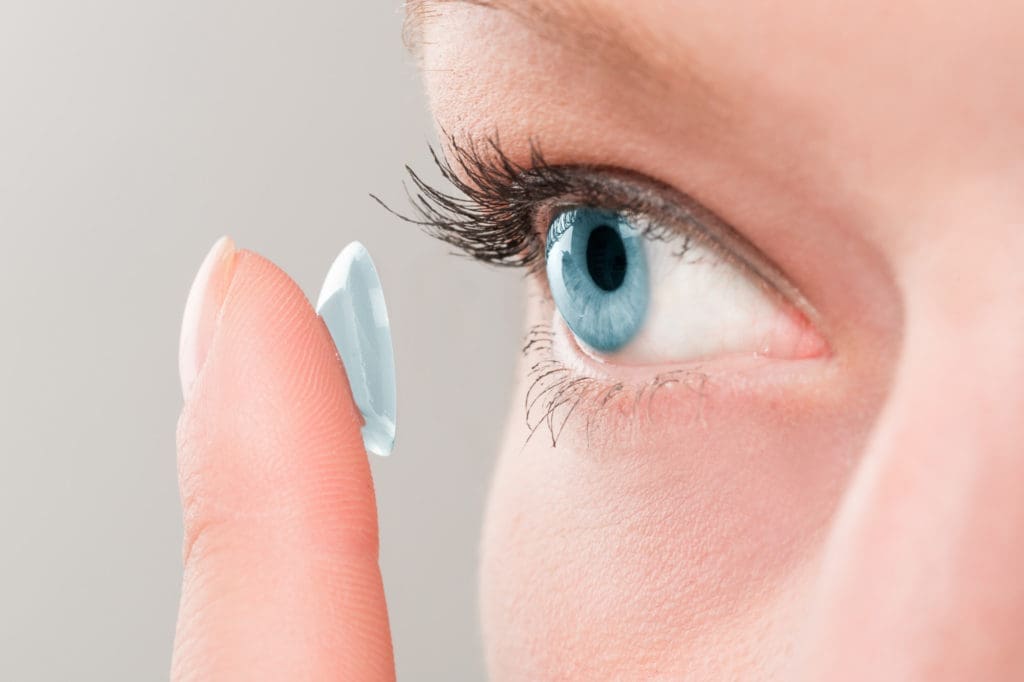
Around 45 million people in the United States wear contact lenses, according to estimates. The majority of people who wear contact lenses are female (two-thirds of wearers), while the average age of contact lens wearers is 31 years old. People prefer contact lenses because they improve vision without affecting appearance or interfering with activities, unlike glasses. If you are planning to buy contact lenses, there are a number of things you should first consider. In this blog post, we will take a closer look at what you need to know when choosing contact lenses. This includes choosing between soft and rigid contact lenses and assessing your eye care needs. Start this guide to contact lenses with us. Understanding Soft Contact Lenses In the United States, approximately 90% of contact lens wearers choose soft contact lenses, underscoring their immense popularity. People favor these lenses for their comfort, flexibility, and easier adjustment compared to rigid gas permeable lenses.With a variety of soft contact lens types available, it’s easy to find a fit that meets specific vision needs and lifestyle preferences. Popular Soft Contact Lens Types: Extended Wear Contact Lenses: These lenses are designed for continuous wear, including overnight, for extended periods (up to seven days). Some options allow up to 30 days of overnight wear, offering convenience for those with busy lifestyles. Planned Replacement Lenses: These lenses should not be worn overnight and are intended for regular replacement, typically every two, four, or 12 weeks. They offer a balance between convenience and eye health by minimizing the risk of lens-related complications. Silicone-Based Lenses: Ideal for individuals prone to dry eyes, these lenses are highly breathable, preventing deposits from accumulating and allowing more oxygen to reach the cornea. This makes them a comfortable option for those who experience irritation with other lens types. Colored Contact Lenses: These lenses not only correct vision but also offer a cosmetic benefit. They come with a tint that makes the lenses easier to locate and allows the wearer to change their eye color for a different look. Soft Contact Lens Fitting: The fitting process for soft contact lenses is crucial to ensure comfort and optimal vision correction. During a soft contact lens fitting, your eye care professional will measure the curvature of your eye and assess its health to determine the most suitable lens type for you. This process helps in finding the perfect fit that minimizes the risk of discomfort and enhances visual acuity. Choosing the right soft contact lens type and ensuring a proper fit are essential steps in enjoying the full benefits of contact lenses, whether for daily wear, extended use, or cosmetic enhancement. Understanding Rigid Gas Permeable Contact Lenses While rigid gas permeable (RGP) contact lenses are less popular in the United States compared to soft contact lenses, they offer distinct advantages for certain users. These lenses are particularly beneficial for individuals with specific vision needs, providing sharper vision and greater clarity in some cases. Benefits of Rigid Gas Permeable Contact Lenses: Improved Visual Clarity: RGP lenses often provide sharper vision, especially for those with astigmatism. Rigid gas permeable contact lenses for astigmatism can offer better clarity and stability compared to soft lenses, making them a preferred choice for many users. Keratoconus Management: For individuals with keratoconus, RGP lenses offer a better fit and improved vision compared to other lens types. Presbyopia Solutions: These lenses are also preferable for many users with presbyopia, providing clear vision at various distances. Post-Surgery Use: RGP lenses are often recommended for individuals who require contact lenses after refractive surgery. Despite these benefits, RGP lenses come with some disadvantages: Comfort and Adjustment: RGP lenses are generally regarded as less comfortable than soft contact lenses and require a longer adjustment period. Regular wear is necessary to maintain comfort, and discontinuing use even briefly can lead to discomfort upon re-wearing. Dislodgment Risk During Activity: Due to their smaller size, there is a higher risk of RGP lenses becoming dislodged during physical activity. Maintenance Requirements: These lenses require more maintenance and care compared to soft lenses, though they are longer-lasting. How long do rigid gas permeable contact lenses last? With proper care, RGP lenses can last up to 1-2 years, making them a cost-effective option over time. How to Remove Rigid Gas Permeable Contact Lenses: Removing RGP lenses requires a specific technique to avoid damaging the lens or irritating the eye. Here’s a simple method: Wash and Dry Hands: Always start with clean, dry hands. Blinking Method: Place your index finger at the outer corner of your eye. Look straight ahead, then blink hard. The lens should pop out into your hand. Suction Cup Method: Use a small suction cup device specifically designed for RGP lens removal. Gently touch the lens with the suction cup and pull it away from the eye. Hybrid Contact Lenses: A Middle Ground Hybrid contact lenses combine the benefits of RGP lenses with the comfort of soft lenses. These lenses feature a rigid gas permeable center surrounded by a soft outer ring, providing both clarity and comfort. Hybrid lenses are effective for correcting a range of vision issues, including farsightedness, nearsightedness, keratoconus, astigmatism, and age-related loss of close-up vision. Assessing Your Eyesight Needs for the Best Contact Lenses Before choosing the right type of contact lens, it’s essential to undergo a comprehensive eye exam for contact lenses and a proper contact lens fitting with an eye care specialist. This process is crucial in determining the contact lens prescription you need and ensuring the lenses fit your eyes comfortably and effectively, especially when switching from glasses to contacts. Key Factors to Consider: Frequency of Use: How often you plan to wear your contact lenses plays a significant role in determining the best type for you. If you only need lenses for occasional wear, such as on weekends, soft contact lenses are likely the best choice due to their comfort and flexibility. However, for daily wear, you have more options, including both soft and rigid gas permeable (RGP)
